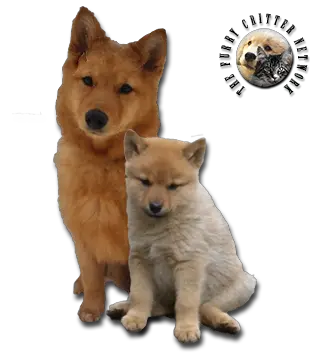Breed Standard
Head: Moderate size, dry, foxlike. Slightly arched forehead. Pronounced stop. Tight, thin lips.
Ears: Mobile, carried erect. Pointed tips. Covered with fine hair.
Eyes: Medium size. Dark color.
Body: Almost square. Deep chest. Belly slightly tucked up. Almost square. Deep chest. Belly slightly tucked up.
Tail: Carried curled over the loin and pointing toward the thigh.
Hair: Short on the head and front of the legs. Longer and straight on the body, back of the legs, and tail. Much longer on the shoulders, particularly in dogs. Short, soft, dense, lighter-colored undercoat.
Coat: Reddish-brown or golden-red on the back. Lighter shade on the cheeks, under the muzzle, on the chest, abdomen, inside of the legs, back of the thighs, and under the tail. White markings on the feet and a narrow white stripe on the forechest are permitted, as are black hairs on the lips and along the back.
Size: Dog: 42 to 50 cm (16.5-19.7 in).Bitch: 39 to 45 cm (15.5-17.7 in).
Weight: 23 to 27 kg (51-59.5 lb).
History
It is assumed that the Finnish Spitz developed from Spitz-type dogs that came from central Russia with migrants 3,000 years ago. These small clans of woodsmen relied on their dogs to help them obtain food, and the excellent hunting ability of the Finnish Spitz made it a favorite choice.
By 1880, as advanced means of transportation brought diverse peoples and their dogs together, Finnish Spitzes mated with other breeds of dogs, and were becoming extinct as a distinct breed. At about that time, a Finnish sportsman from Helsinki named Hugo Roos observed the pure native Finnish Spitz while hunting in the northern forests. He realized the many virtues of the pure Finnish Spitz breed and decided to select dogs that were untainted examples of the genuine Finnish Spitz in order to try to revive the breed. Thirty years of careful breeding resulted in the modern Finnish Spitz; the dogs are descendants of his original foundation stock.
Finnish Kennel Club has revised the breed standard six times, and the latest version was confirmed in 1996. In 1979, when the club celebrated its 90th anniversary, the Finnish Spitz was declared Finland's national dog breed. The club is also working for including the hunting experience with the Finnish Spitz on the UNESCO Intangible Cultural Heritage List.
Behavior
This breed is active, alert and lively. They need one or two long walks each day and will be fairly inactive indoors. This breed will not adapt well to a strictly kenneled living situation; they need a balance of outdoor exercise and indoor play time with the family. Finnish Spitzes are considered to interact well with people and they are especially good with children. They are always ready to play with children but if ignored, they will usually walk away. As with all dogs, young children and dogs should always be supervised when together. It is an independent breed and will be attached to its family while remaining aloof with strangers. The Finnish Spitz tends to be protective; males have more domineering traits than females.
Most Finnish Spitzes get along well with other dogs in the home. They are bred as a hunting dog and thus are unreliable around small animals, but on an individual basis may live well with cats.
The breed barks at anything perceived to be out of the ordinary. Barking is a major part of their hunting activities. In Finland, these dogs are prized for their barking abilities, which can range from short, sharp barks to many barks per minute that sound like a yodel. The Finnish Spitz can bark as many as 160 times per minute. In Scandinavia, a competition is held to find the "King of the Barkers." In Finland, their barking ability in the field must be proven before a conformation championship can be earned. When used as a hunting companion, the barking is a way to signal the hunter that the dog has located prey in the forest. They can be trained to reduce the amount of barking, although the barking does make them superb watchdogs.
Finnish Spitzes are independent, strong-willed, intelligent dogs. They are best trained with a soft voice and touch. This breed will not respond well to harsh training methods. They should be trained with a light touch and positive reinforcement methods. With patience and calm yet firm handling, the Finnish Spitz can be a wonderful companion.
The Finnish Spitz has a coat that is self-grooming and stays pretty clean. All the brushing you need for this dog is just a brushing with a comb or brush to get rid of dead hair. They only need a bath when very dirty as they do not have a doggy odor. This breed is a heavy seasonal shedder. Otherwise, this is a very easy breed of dog to take care of. For exercising, they love to go jogging. As long as this dog gets plenty of exercise then you are sure to have them as a close companion.
Function
Hunter, Pet.
Health
The Finnish Spitz is typically a very healthy breed, with few general health concerns. However, breeders should be consulted to understand the prevalence of a specific disorder in this breed. Below is a short list of what is known to occur:
Hip dysplasia
Patellar luxation
Elbow dysplasia
Epilepsy






